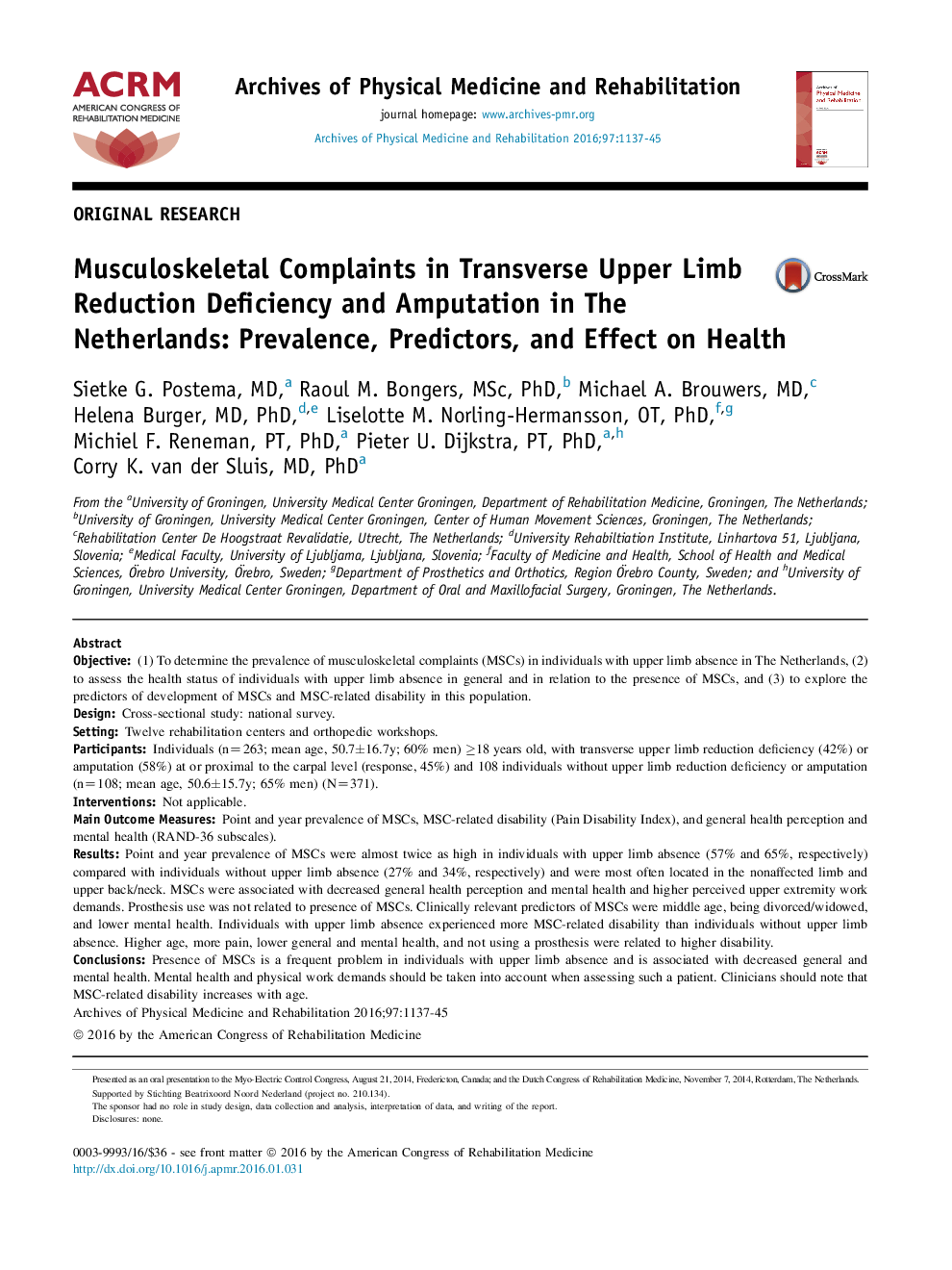| کد مقاله | کد نشریه | سال انتشار | مقاله انگلیسی | نسخه تمام متن |
|---|---|---|---|---|
| 3447837 | 1595665 | 2016 | 9 صفحه PDF | دانلود رایگان |
• Musculoskeletal complaints occur frequently in individuals with upper limb absence with considerable consequences.
• Individuals with reduction deficiency or acquired amputation need clinical attention because both groups are prone to musculoskeletal complaints.
• Musculoskeletal complaint prevention programs are warranted and should include assessment of mental health.
• Individuals with high perceived physical work demands experience musculoskeletal complaints more often.
• Older individuals should be monitored specifically for musculoskeletal complaints and related disability.
Objective(1) To determine the prevalence of musculoskeletal complaints (MSCs) in individuals with upper limb absence in The Netherlands, (2) to assess the health status of individuals with upper limb absence in general and in relation to the presence of MSCs, and (3) to explore the predictors of development of MSCs and MSC-related disability in this population.DesignCross-sectional study: national survey.SettingTwelve rehabilitation centers and orthopedic workshops.ParticipantsIndividuals (n=263; mean age, 50.7±16.7y; 60% men) ≥18 years old, with transverse upper limb reduction deficiency (42%) or amputation (58%) at or proximal to the carpal level (response, 45%) and 108 individuals without upper limb reduction deficiency or amputation (n=108; mean age, 50.6±15.7y; 65% men) (N=371).InterventionsNot applicable.Main Outcome MeasuresPoint and year prevalence of MSCs, MSC-related disability (Pain Disability Index), and general health perception and mental health (RAND-36 subscales).ResultsPoint and year prevalence of MSCs were almost twice as high in individuals with upper limb absence (57% and 65%, respectively) compared with individuals without upper limb absence (27% and 34%, respectively) and were most often located in the nonaffected limb and upper back/neck. MSCs were associated with decreased general health perception and mental health and higher perceived upper extremity work demands. Prosthesis use was not related to presence of MSCs. Clinically relevant predictors of MSCs were middle age, being divorced/widowed, and lower mental health. Individuals with upper limb absence experienced more MSC-related disability than individuals without upper limb absence. Higher age, more pain, lower general and mental health, and not using a prosthesis were related to higher disability.ConclusionsPresence of MSCs is a frequent problem in individuals with upper limb absence and is associated with decreased general and mental health. Mental health and physical work demands should be taken into account when assessing such a patient. Clinicians should note that MSC-related disability increases with age.
Journal: Archives of Physical Medicine and Rehabilitation - Volume 97, Issue 7, July 2016, Pages 1137–1145
